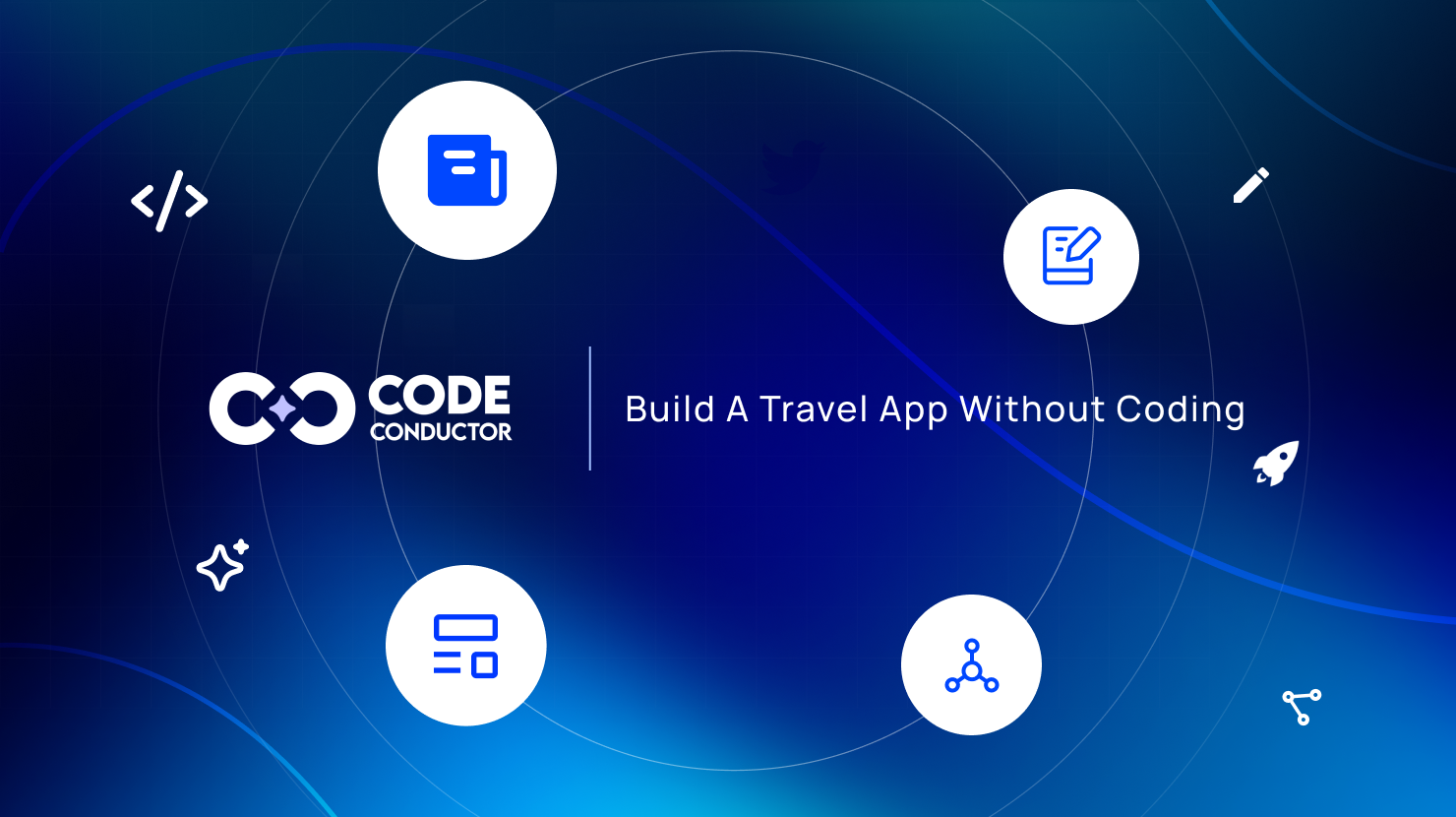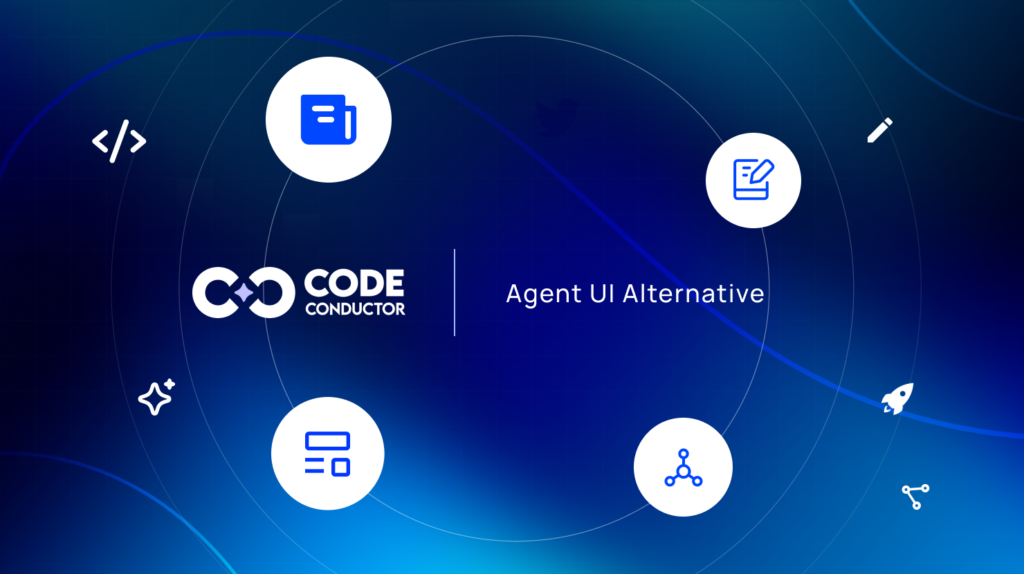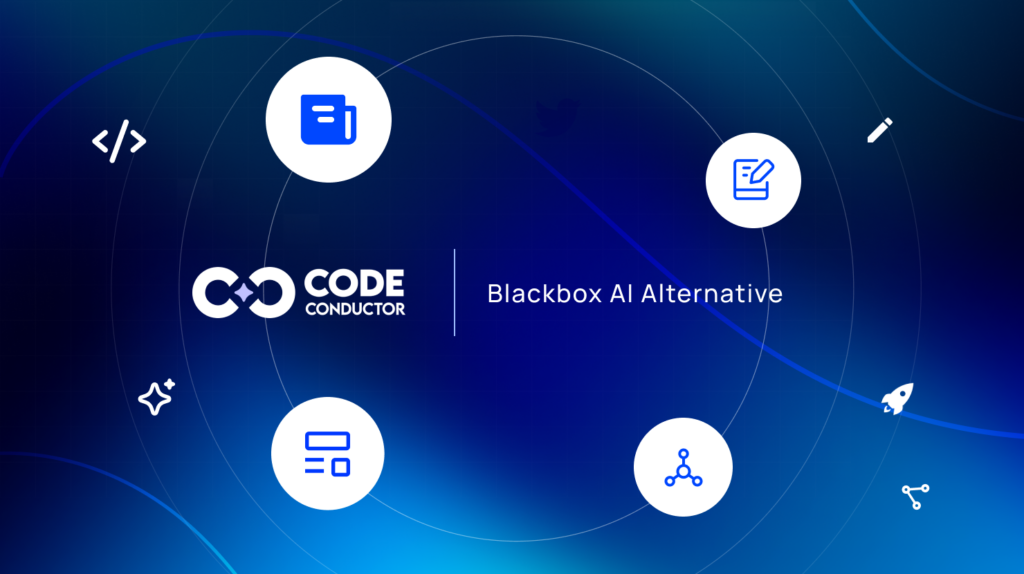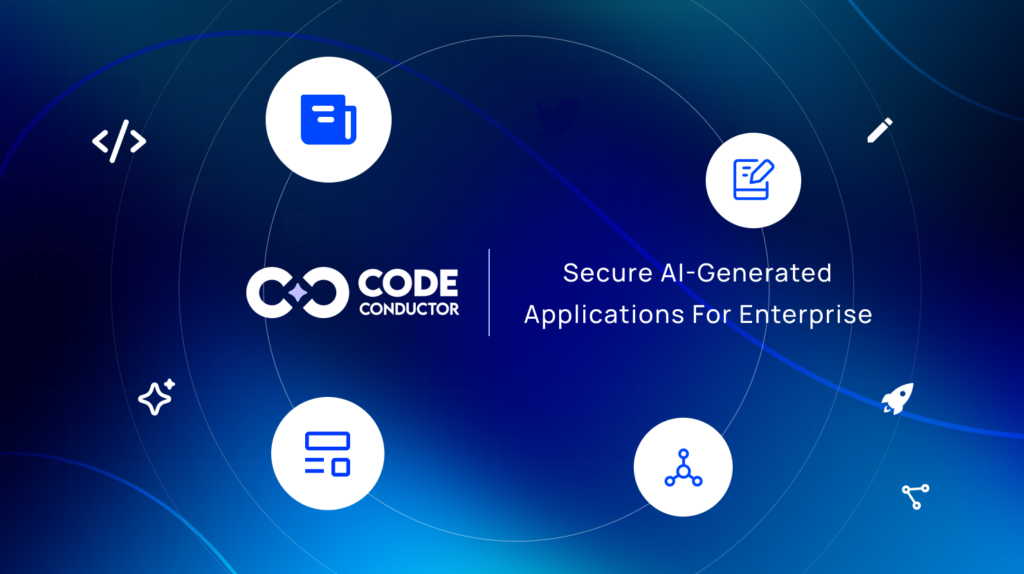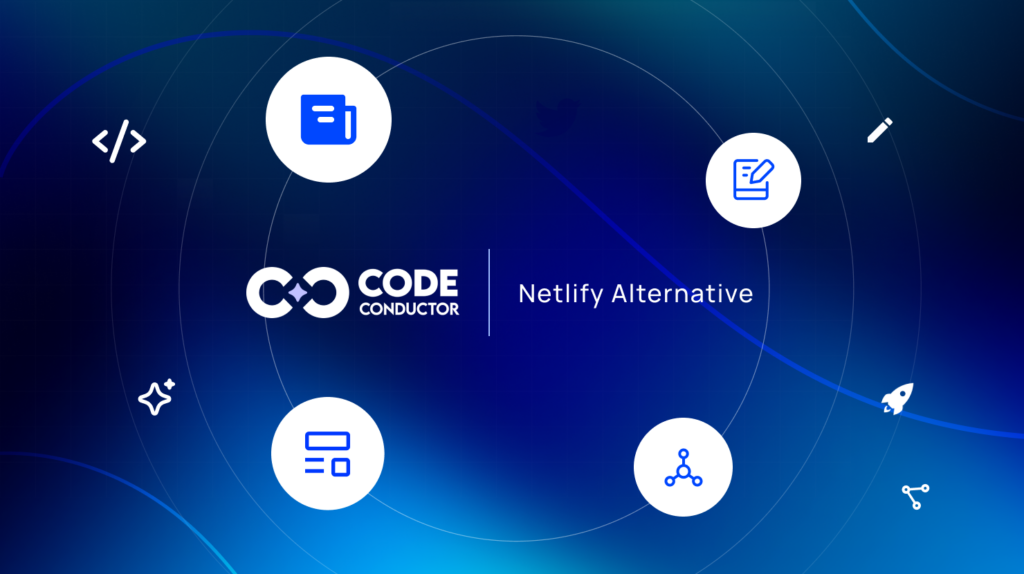In This Post
- Planning and Conceptualizing Your No-Code Travel App
- Selecting the Right No-Code Platform for Travel App Development
- Designing Your Travel App
- User Experience (UX) Best Practices for Mobile Travel App
- Customizing for Your Brand
- Essential Features to Build No Code Travel Agency Mobile App:
- Must-Have Functionalities in No Code Travel Mobile Application
- Advanced Features for a Competitive Edge:
- Monetization Strategies for Your No-Code Travel App
- Real-World Success Stories
- How Much Does It Cost to Build a No-Code Travel App?
- Top 10 Travel Mobile Applications in the Market:
- Embarking on Your No-Code Travel App Journey with CodeConductor
In an era where travel experiences are increasingly digital, launching an app like Airbnb or Kayak doesn’t require deep pockets.
Can I build a travel app like Airbnb using no-code AI Platform?
Yes, that can be done, you need to have the right no-code Ai platform to build an airbnb clone without coding.
Welcome to the game-changing world of no-code AI platforms, where your vision for a travel app can emerge faster and more affordably than ever before.
The advantages of no-code development in travel are numerous. It opens the door to rapid innovation, allowing you to bring unique travel solutions to the market swiftly. With no-code platforms, you can easily iterate and refine your app based on user feedback, keeping your app relevant and ahead of trends. This agility in development and deployment is essential in the dynamic travel industry, where consumer preferences and market demands can shift rapidly.
No-code development also significantly reduces costs, not only in terms of development but also in ongoing maintenance and updates. By lowering these barriers, no-code platforms like CodeConductor empowers entrepreneurs, small businesses, and even individuals to compete in the travel industry, a domain once dominated by big players with deep tech resources.
Dive into this comprehensive guide and discover how you can be the architect of the next big thing in travel tech!

Planning and Conceptualizing Your No-Code Travel App
Before diving into the no-code world, it’s vital to plan.
- Identify your niche in the travel market
- Are you targeting luxury travelers, budget backpackers, or adventure seekers?
Understand your potential users’ needs and preferences. This understanding will guide your app’s features, design, and overall user experience.
Market Analysis of Travel Applications
The Travel and tourism market is projected to reach US$854.70 billion in 2023, with an expected growth rate of 4.42% annually, leading to US$1,016.00 billion by 2027. Source (Statista)
This data effectively illustrates the growing importance and reliance on travel apps, making a compelling case for the relevance and potential success of no-code travel app development in the current market.
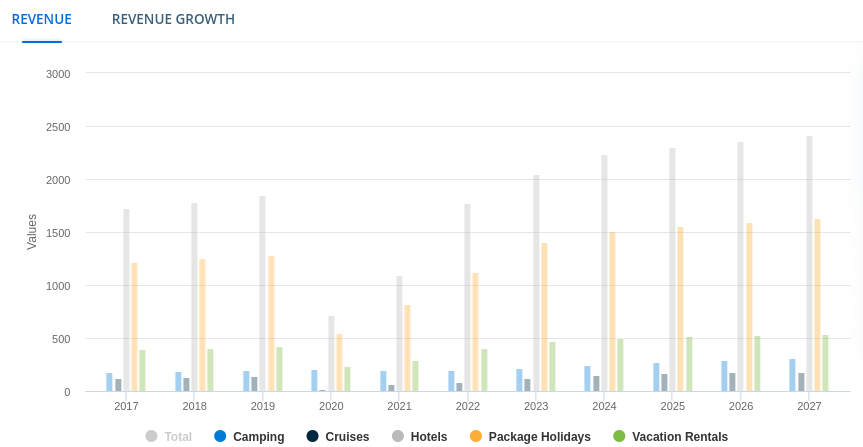
Selecting the Right No-Code Platform for Travel App Development
Once you have a clear understanding of the market and your target audience, the next step is choosing the appropriate no-code platform. This choice is critical as it will dictate the capabilities and limits of your app.
The choice of no-code platforms is unlimited and makes your work difficult to choose the best one. But, worry not as we have shortlisted top no-code website builders with pre-built templates to make your task easy.
If you still have any confusion, there are several key factors for choosing the right no-code development platform. Keep these factors in mind to avoid any confusion.
Designing Your Travel App
When embarking on your journey to travel app creation without coding, the design phase is pivotal. This is where your idea starts taking a tangible form. A well-thought-out design not only makes your app appealing but also functional and user-friendly.
User Experience (UX) Best Practices for Mobile Travel App
- Simplicity is Key: Travel apps should simplify the user’s journey, not complicate it. Keep the interface clean and uncluttered. A simple, intuitive design ensures that users of all tech-savviness levels can navigate your app with ease.
- Fast and Responsive: Speed is compulsory. According to research, 70% of mobile users abandon websites or apps that take longer than three seconds to load. Ensure your app is optimized for quick loading, even on slower connections.
- Intuitive Navigation: Users should find what they need in the least number of taps possible. Features like a prominent search bar, easily accessible menus, and a clear call to action (CTA) can enhance navigation.
- Accessibility: Your app should be accessible to all users, including those with disabilities. This includes voice commands, screen reader compatibility, and options for different font sizes.
- Visual Hierarchy: Use color, contrast, and size to guide users through your app’s most important features. A well-planned visual hierarchy can significantly improve the user experience.
Customizing for Your Brand
- Branding Elements: Incorporate your brand’s colors, fonts, and logos consistently throughout the app. This reinforces brand recognition and offers a cohesive experience.
- Personalization: Allow users to customize their experience within the app. Features like saving favorite destinations or setting preferences can make the app more engaging.
- Feedback and Iteration: Collect user feedback through surveys or app analytics. Understanding what users like and don’t like will guide you in refining the app.
- Localize Your Content: If your app targets users in different regions, consider localizing the content. This doesn’t just mean translating the text but also adapting the content to reflect local cultures and norms.
- Regular Updates: Keep your no-code travel app fresh with regular updates. Whether it’s new features, bug fixes, or UI enhancements, regular updates show that you are committed to providing a great user experience.
Essential Features to Build No Code Travel Agency Mobile App:
In the bustling world of travel and exploration, a successful travel app must blend functionality with innovation to stand out. Let’s explore the essential features that form the backbone of a successful travel app, and then delve into advanced features that can give your app a competitive edge. Check out the comprehensive guide on creating a messaging app like Slack without coding.
Must-Have Functionalities in No Code Travel Mobile Application
- Registration and Login: The app should offer simple yet secure sign-up options, including integration with social media accounts for quick access. This ease of entry not only simplifies user onboarding but also personalizes the experience right from the start.
- Travel Packages: Your app must feature a variety of travel packages catering to different preferences and budgets. Offering curated packages for various destinations ensures users can find exactly what they’re looking for, whether it’s a luxury getaway or a budget-friendly adventure.
- Promotional Vouchers: Incorporating a system for promotional vouchers can significantly enhance user engagement. These vouchers, which could offer discounts or special deals, not only incentivize new users to try the app but also encourage repeat bookings.
- Effortless Trip Planning: The app must be able to streamline itinerary creation with intuitive destination suggestions and collaborative tools, making planning stress-free for individuals or groups.
- Real-Time Booking Capabilities: This is the next must-have functionality that enables users to conveniently book flights, accommodations, and activities through the app, with instant confirmation and seamless integration.
- Personalization and Recommendations: The app must offer customized recommendations based on user preferences, enhancing the travel experience with tailored suggestions.
- Offline Accessibility: Essential travel information, including maps and itineraries, remains accessible without the Internet, ensuring travelers are never stuck because of the unavailability of the Internet.
- Secure Payment Gateways: Your no-code travel app must have secure payment systems such as Apple Pay for iPhone users, Samsung Pay, PayPal, Google Pay, etc. to safeguard user transactions, reinforcing confidence in the app’s reliability.
- Multilingual Support: This is another must-have functionality that you can’t miss to include in your no-code travel app. With multiple language options, the app welcomes a global audience, breaking language barriers in travel planning.
- Real-Time Updates: With this feature, travelers stay informed of the latest flight status, weather conditions, and local events, all updated in real-time.
- Smart Notifications: Timely alerts for flight changes, gate information, and personalized tips keep travelers well-informed and prepared.
- Expense Tracking and Budgeting: If your app has this feature, it’s a plus point because it monitors expenses and helps travelers manage budgets, making financial planning during travel easy and efficient.
- User Reviews and Ratings: A transparent review and rating system allows users to share experiences and insights, aiding others in making informed decisions.
- Integration with Wearable Devices: The app’s compatibility with wearable tech like smartwatches offers convenience for travelers on the move.
- Local Culinary and Cultural Experiences: Users can discover local dining and cultural events, enriching their travel experience with authentic local flavors.
Advanced Features for a Competitive Edge:
- Augmented Reality (AR) Exploration: Your travel app should leverage AR to offer an immersive exploration experience. This feature enables users to engage with their destinations in a unique, interactive manner, enhancing their understanding and enjoyment of the traveler or locale.
- Blockchain for Secure Transactions: Incorporating blockchain technology is crucial for ensuring secure, transparent financial transactions. This advanced feature will boost user trust by providing a reliable and modern way to handle payments and other sensitive operations.
- Virtual Tour Guides: Implement AI-powered virtual tour guides within the app. These guides offer real-time, interactive information, making travel experiences more informative and personalized, much like having a knowledgeable local guide.
- Social Integration: Including social media integration is essential. This functionality allows users to share their travel experiences and recommendations, fostering a community atmosphere within the app. It’s a great way for travelers to connect and exchange valuable insights.
Monetization Strategies for Your No-Code Travel App
Monetizing your no-code travel app effectively is key to transforming it from a valuable tool into a profitable venture. Here’s how you can do it without hampering the user experience.
Diverse Revenue Models
- Commission-Based Model: This is a common strategy where you earn a commission for every booking made through your app. For instance, if your app facilitates hotel bookings, a small percentage of each booking can be your revenue. This model is particularly effective as it aligns with user actions that bring direct value.
- Subscription Model: A travel subscription involves a regular payment, typically charged monthly or annually, by a travel company. This payment grants subscribers access to exclusive products, special discounts, cashback offers, and other benefits. Unlike other periodic payments like rent, travel subscriptions are usually auto-charged to a customer’s linked credit card, providing a seamless transaction experience.
- In-App Advertising: In-app advertising can be a significant revenue source. Although less dominant than in-app purchases, which account for 48.2% of mobile app earnings, ads-based revenue still constitutes a notable 14% of the market. Balanced and well-integrated advertisements within your app can contribute substantially to your overall earnings.
- Affiliate Marketing: Partner with travel agencies, airlines, or hotel chains. Your app can feature their services, and in return, you earn a commission for referrals. This method can be particularly beneficial if your app caters to a niche travel audience.
- Freemium Model: Offer basic functionalities for free, while more advanced features can be locked behind a paywall. This model entices users with the capabilities of the app and then encourages them to upgrade for a fuller experience.
Maximizing Profits without Compromising User Experience
To ensure profitability does not come at the expense of user experience:
- Keep advertisements minimal and non-disruptive.
- Differentiate between free and premium features to avoid confusion.
- Offer a seamless transition from free to paid versions.
- Continuously add value to subscription packages to retain users.
SEO Strategies for No Code Travel Apps
To enhance your travel app’s visibility, focus on App Store Optimization (ASO) for higher ranking in app store searches, and leverage content marketing on your website or blog to drive organic traffic. Additionally, engage in social media marketing to create buzz and attract a wider audience to your app.
You will be amazed to know that CodeConductor provides you with a fully SEO-optimized website, and enables you to save your hard-earned money on SEO Services from any other third-party SEO expert.
Real-World Success Stories
The no-code app development landscape is dotted with inspiring success stories. For instance, consider the journey of ‘Tripcase,’ a travel itinerary app built without extensive coding, which streamlined trip planning for millions of users.
Another example is ‘Hopper,’ an app that leverages big data to predict flight prices and has successfully carved a niche in the competitive travel market. These examples demonstrate the potential of no-code platforms in creating innovative and user-friendly travel apps that can achieve substantial market success.
How Much Does It Cost to Build a No-Code Travel App?
Determining the cost of building a no-code travel app depends on various factors, including the complexity of the app, the features needed, and the chosen no-code platform.
Generally, no-code development is more cost-effective than traditional coding, with the primary expenses being platform subscription fees and any additional integrations or premium features your app requires.
The beauty of no-code development is its scalability, allowing you to start small and expand as your app gains traction, making it a financially accessible option for many aspiring app creators.
Top 10 Travel Mobile Applications in the Market:
- Kayak – A comprehensive travel planner that allows users to compare prices for flights, hotels, and rental cars from various sources, helping them find the best deals and plan their trips efficiently.
- Airbnb – Known for its unique accommodation options, Airbnb connects travelers with hosts offering homes, apartments, and experiences worldwide, providing a personalized and local touch to the travel experience.
- Booking.com – A user-friendly platform offering a vast array of accommodation choices, from hotels to apartments, with detailed reviews and easy booking options, making it a go-to for seamless trip planning.
- Expedia – A one-stop-shop for travel planning, Expedia lets users book flights, hotels, rental cars, and activities all in one place, providing a convenient solution for organizing every aspect of a journey.
- Hotels.com – With a wide range of accommodation options and a rewarding loyalty program, Hotels.com is a popular choice for travelers seeking diverse choices and the opportunity to earn free nights.
- Tripadvisor – Renowned for its extensive traveler reviews, Tripadvisor offers insights into hotels, restaurants, and attractions, aiding users in making informed decisions and crafting memorable itineraries.
- Thomas Cook – A trusted name in travel, Thomas Cook provides a full-service platform for planning vacations, including flights, hotels, and package deals, ensuring a hassle-free and enjoyable travel experience.
- Hopper – This innovative app analyzes flight prices and predicts when is the best time to book, helping users save money on airfare with its smart and data-driven approach to travel planning.
- Make My Trip – A popular choice in the Indian market, Make My Trip offers a variety of travel services, including flights, hotels, and holiday packages, catering to the diverse needs of travelers.
- Yatra – Yatra is a versatile travel planner catering to the Indian market, offering a range of services such as flight and hotel bookings, holiday packages, and train and bus reservations, making travel planning convenient for users in India.
You can also embark on the journey of creating your travel app to start your own business using platforms like CodeConductor.
Embarking on Your No-Code Travel App Journey with CodeConductor
Whether you’re an aspiring entrepreneur, a travel enthusiast, or a business looking to expand into the digital realm, now is the time to harness the power of AI. AI software development platforms are becoming more advanced and user-friendly, the only limit is your imagination.
Don’t let the lack of technical coding skills hold you back. Embrace the no-code movement and start building your dream travel app today.
If you’re ready to embark on this journey but need guidance or resources, reach out to CodeConductor. We’re here to help you navigate through the no-code world and turn your vision into a digital success.
Build Your AI Travel App with CodeConductor

Founder CodeConductor

